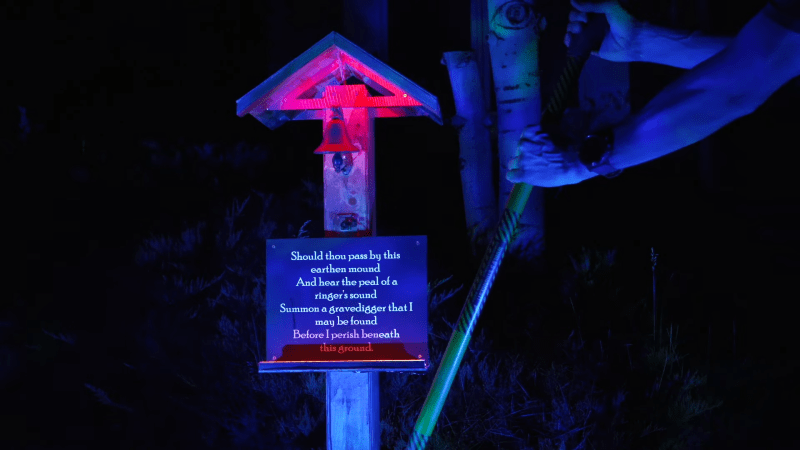Being buried alive isn’t fun, we imagine. Fear of it led to the development of various safety coffin ideas in the 18th and 19th centuries, and [Glen Akins] wonderful Halloween prop riffs on that tradition today.
The safety coffin was a simple solution for those afraid that this might happen to them. One concept had a bell which was installed above freshly dug graves with a string extending into the coffin. One who found themselves accidentally buried alive could then pull the string to ring the bell and summon help.
[Glen’s] installation eliminates the coffin and the dead body, and simply mounts a bell on a post. Inside, there’s an ultrasonic rangefinder that detects passers by. When someone walks closely enough to the prop, a microcontroller triggers a servo which rings the bell with a haunting urgency.
It’s a simple build, but appropriately installed with its LED lighting, it really does pop. It would be a wonderful way to add atmosphere and mood to a Hallowe’en party or haunted house. We’ve seen some great Hallowe’en hacks over the years, and some of the best are pumpkins. Video after the break.















The book “Death to Dust” has a section on this. A civil war cemetery was being moved, and they took the opportunity to examine the remains to see which had signs of life after burial – scratches on the insides of lids, bodies lying on side, and so on (among other examinations of interest).
IIRC the number was quite large, something like 6% had some evidence.
The book cites this and general paranoia of being buried alive as impetus for the rise of embalming in the US as standard practice. Once you’re embalmed, you’re definitely dead.
https://www.amazon.com/Death-Dust-What-Happens-Bodies/dp/1883620074
Book also recounts numerous historical examples of people being buried alive and recovered, from as late as 1967. The book also has this quote from an embalming manual:
“The chemical reaction between the embalming fluid and the tissues of the cadaver are said to simulate life signs, such as gasps and muscular contractions. The practitioner is reassured that these will go away as the injection proceeds”
Enjoy your Halloween :-)
Nice. The color and construction really sells it.
One thing though: I think “should thou pass” should be “should you pass” since the sign, a proxy for the buried, shouldn’t assume familiarity/closeness (or contempt) for the reader of the sign. I know, it wouldn’t sound as much like old-timey English.
Eh, I might have contempt for the reader since they are obviously reading this sign while I was being buried alive!